AMD graphics cards differ from their Nvidia counterparts in that all AMD ASUS GPUs don’t require individual tweaking. You can easily change a few simple settings and drastically improve outputs. This works for both old and new generation of AMD Radeon graphics cards and will let you improve image quality without having to input a lot of confusing commands.
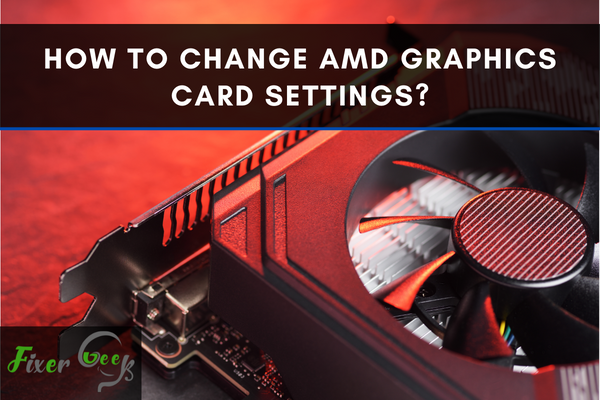
AMD graphics card settings offer users to customize the condition and detailing of the image to enhance the experience in playing games or using the high-performance application. For achieving maximum quality, it is essential to balance the visuals and the performance. You can balance it easily by adjusting the settings of the AMD graphics card.
Adjusting AMD Graphics Card Settings
- First, right-click on your PC screen and click on the “AMD Radeon Settings” for opening the AMD graphics options.

- Pick “Preferences” from the bottom left side of the screen. Then, choose the “Radeon Additional Settings” option. Remember that this section will only show up if there are settings available for your PC hardware.
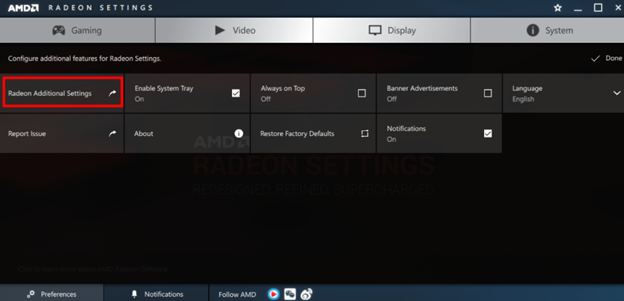
- The Radeon Additional Settings option will show up on another screen and display a graphics option based on the PC system and hardware.
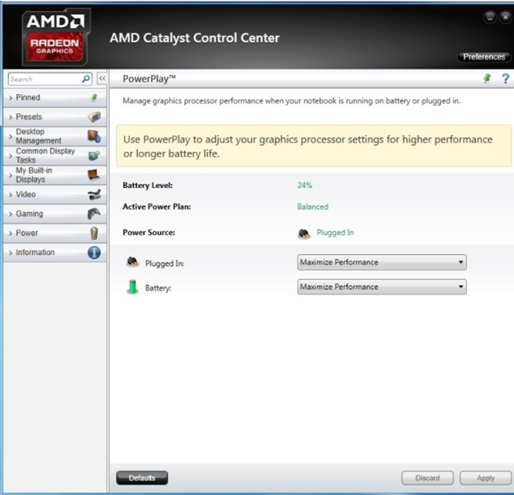
- Extend the “Power” tab and click on the “Switchable Graphics Global Settings” option. Locate the “Graphic Setting” option and pick “High performance.” Then, click on “Apply.”
- There is also a “PowerPlay” section with two options: Maximize Quality or Battery Life.” You may choose to adjust it according to your requirement and select “Apply” after adjustment. Save the changes.
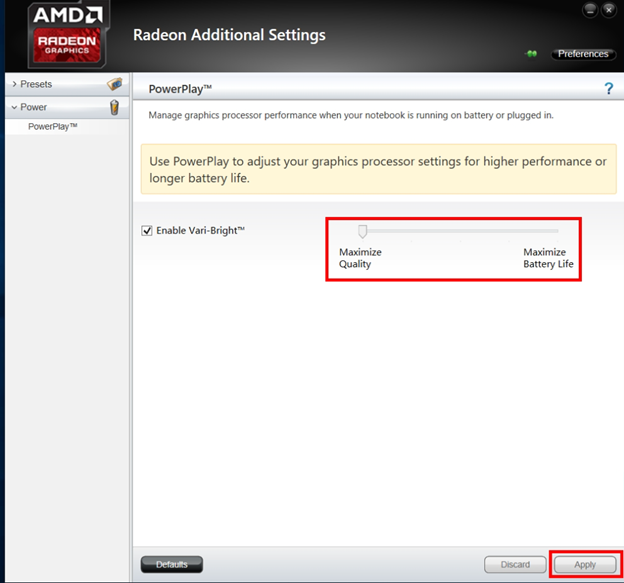
- You may also change the Resolution and Scaling in the settings option. From the “AMD Radeon Settings” option, access “Display.”
- See the default setting of the “GPU Scaling” option and select “OFF.” You have to turn it off for every monitor you use.
- Then, go to the “Scaling Mode” and change the setting to “Preserve aspect ratio.” Again, you have to change this setting for every usable monitor.
Adjusting AMD Graphics Card Settings for Gaming
- You can also adjust the AMD graphics settings to improve your gaming experiences. For that, access the “Gaming” section from the “AMD Radeon Settings.”
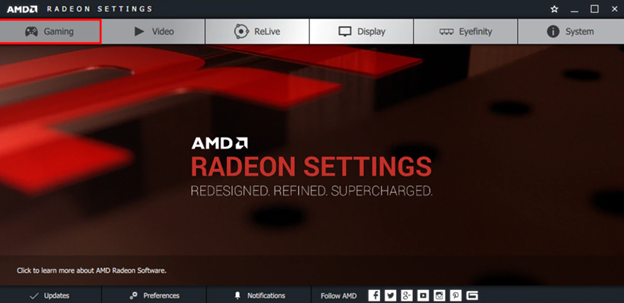
- Select “Global Settings.” Every modification you do here will be automatically applicable for every application you open. You may also generate customized settings for a particular application.
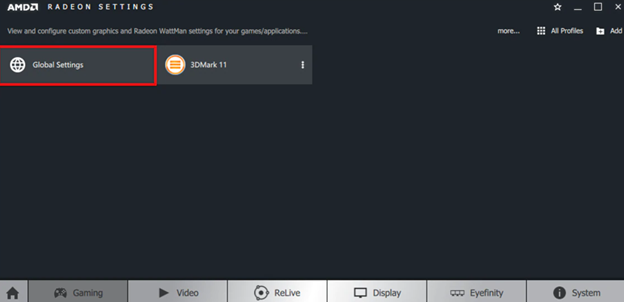
- First, change the “Anti-aliasing Method” setting that enhances image condition. There are three options here. Choose the one appropriate for your PC.
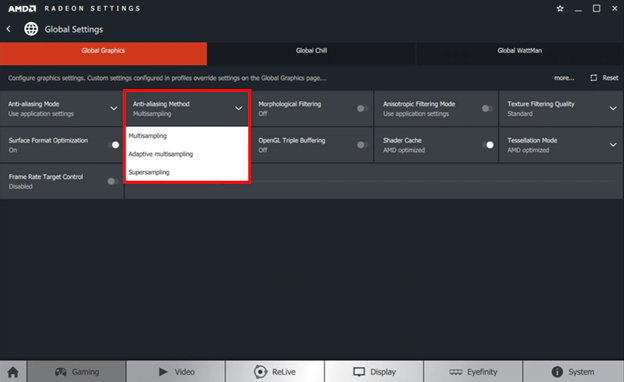
- Then, modify the “Anti-aliasing Mode,” which sets the authority of Anti-Aliasing. It also has three options: the “Override Application Settings” provides more opportunities for enhancing image quality.
- It will also open the option of “Morphological Filtering.” Switch it “On” or “OFF.”
- Then, change the “Anisotropic Filtering” to “Override application settings” and pick its level.
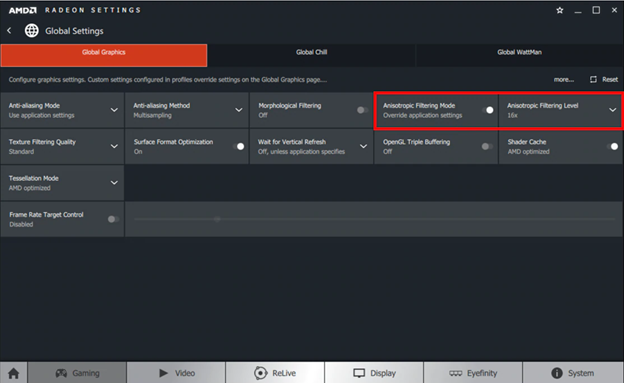
- Choose the “High,” “Standard,” or “Performance” option from the “Texture Filtering Quality.”
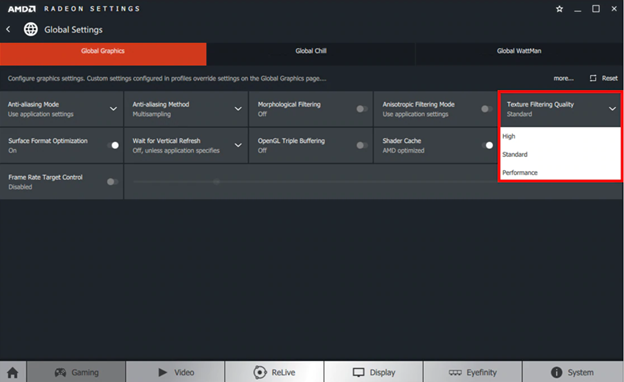
- The next option is for “Surface Format Optimization.” Switch it “ON” for improving the gaming quality.
- “Shader Cache” offers more speed during loading. The default settings for this is “AMD Optimized,” but you may disable it if you need.
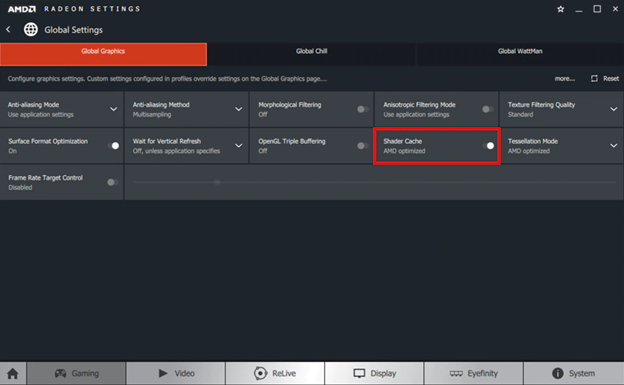
- Keep the “Vertical Refresh” and “OpenGL Triple Buffering” options “ON” for maximum quality.
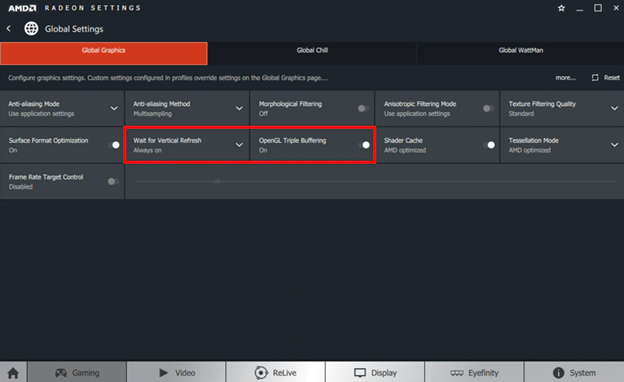
- You may also adjust the “Frame Rate” from 30 to 200 FPS.
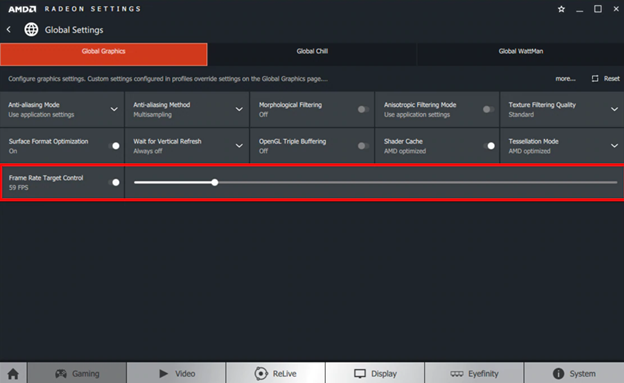
- If you wish to go back to the default setting after customization, select the “Reset” option.
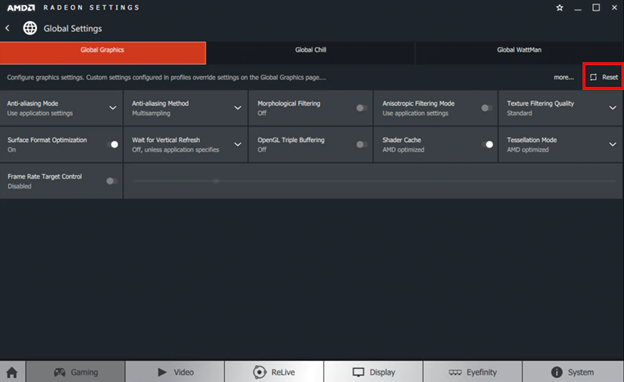
Summary: Change AMD Graphics Card Settings
- Go to Power Options in the Control Panel.
- Select the High Performance profile.
- Click Change plan settings next to the High Performance profile.
- Click Change advanced power settings.
- Expand AMD Graphics Settings and set Plugged in and Battery modes to High Performance.